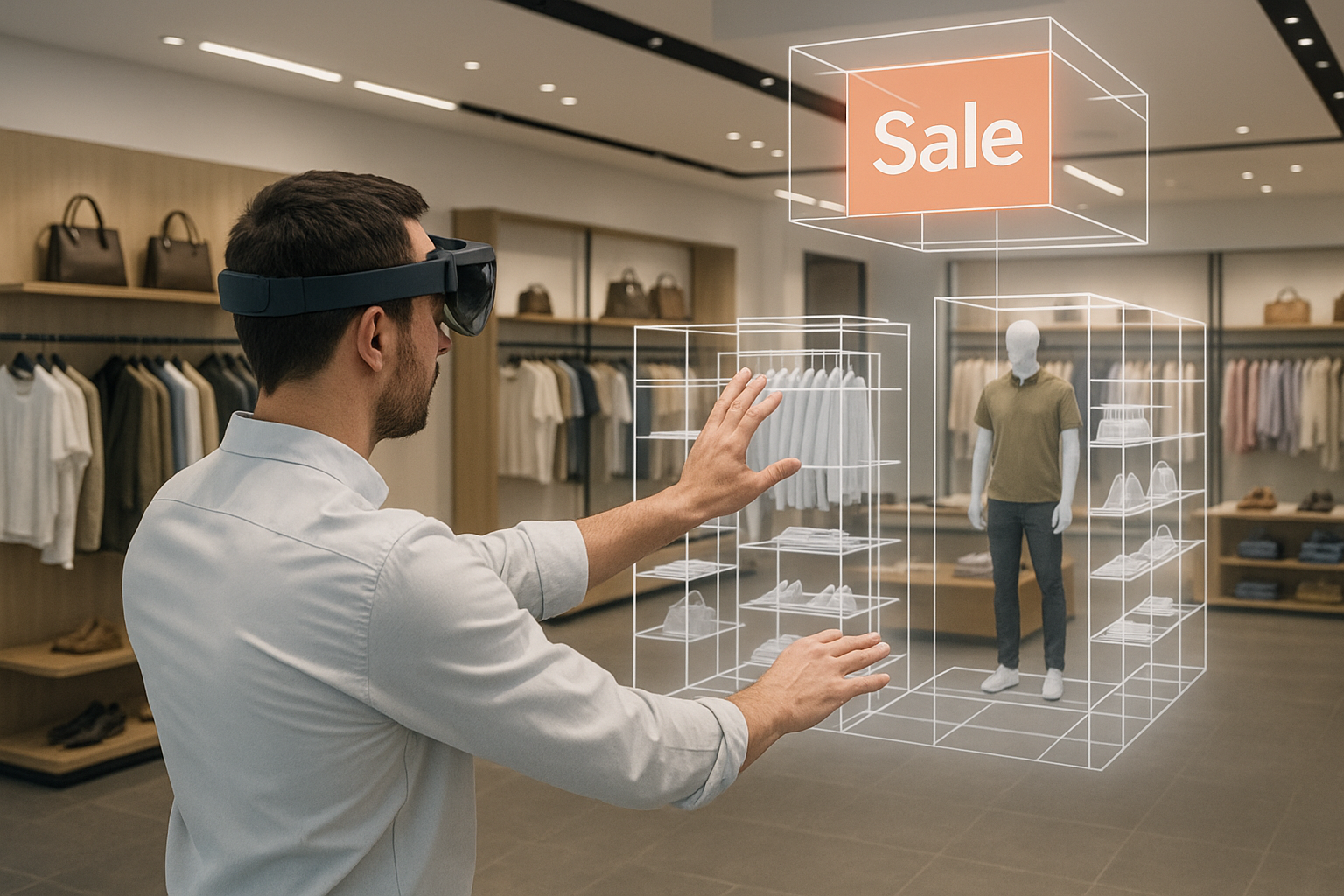What’s new in AR this month? At the August 2025 Retail Innovation Summit, the National Retail Federation released its annual “Immersive Retail Technology Report.” The findings show that 57% of top-performing retailers now use AR in store design—up from 38% in 2023. These retailers reported an average 18% increase in same-store sales and a 21% boost in customer dwell time after implementing AR-driven layouts.
Why AR in retail store design matters in 2025
In an era where shoppers expect both efficiency and entertainment, AR bridges the gap between digital convenience and physical engagement. By enabling real-time visualization of layouts, displays, and signage, AR empowers retailers to test and perfect designs before making costly changes on the sales floor.
Data-backed benefits
- Sales lift: Retailers using AR in design report an average 12–22% sales increase (NRF 2025).
- Reduced setup time: Store resets are completed up to 30% faster when pre-tested in AR.
- Lower fixture waste: AR trials reduce fixture replacement costs by up to 18%.
Quick Facts
- 57% of top retailers now use AR in store design workflows.
- Average 21% boost in dwell time post-AR redesign.
- Up to 18% savings in fixture and display budget.
How AR transforms the retail design process
1. Store scanning and modeling
Using LiDAR-equipped devices, designers scan the physical store to create a precise digital twin. This model becomes the foundation for AR layout experiments.
2. Virtual merchandising
Designers can place, move, and resize virtual shelves, racks, signage, and product displays within the actual store space. AR supports seasonal themes, promotions, and pop-up shop concepts without physically moving fixtures until the layout is finalized.
3. Traffic flow simulation
- Predict customer movement and identify high-congestion zones.
- Test signage placement to direct traffic toward high-margin items.
- Measure potential bottlenecks for accessibility compliance.
4. Stakeholder collaboration
Visual AR walk-throughs allow merchandisers, marketing teams, and executives to sign off on designs in minutes instead of days, reducing costly communication errors.
Customer-facing AR experiences
AR is not just for the back-end design—it’s also reshaping how customers interact with stores:
- Interactive navigation: Customers can find products via AR wayfinding overlays.
- Virtual try-ons: Apparel, accessories, and cosmetics can be tried digitally without fitting rooms.
- Storytelling displays: AR content adds background stories, usage tips, and reviews to products.
Case studies
Nike Flagship Store, New York
Nike used AR to redesign its footwear wall layout based on heatmap data from previous sales seasons. The result was a 15% increase in shoe sales and a 25% improvement in time-to-purchase.
IKEA Concept Store, Berlin
By simulating room setups in AR before committing to fixture placement, IKEA reduced store reset time by 35% and improved customer flow through high-traffic zones.
Best practices for AR retail design
- Base layouts on data: Integrate POS and traffic analytics into AR simulations.
- Test multiple configurations: Run A/B layout tests in AR to compare projected results.
- Plan for seasonal flexibility: Use modular fixtures that adapt to AR-tested campaigns.
- Document decisions: Capture screenshots and layout files for repeatable success.
Future trends in AR retail
- AI-driven planograms: Automatically optimize product placement for profitability and shopper flow.
- Personalized layouts: AR adapting in-store displays based on customer profiles and shopping history.
- Live AR promotions: Dynamic signage that changes based on real-time inventory and weather.
References
Key takeaways
- AR in retail store design is now mainstream, driving measurable sales and engagement increases.
- Data-informed AR layouts reduce waste, speed up execution, and enhance customer experience.
- Future AR retail will merge with AI for real-time adaptive shopping environments.




